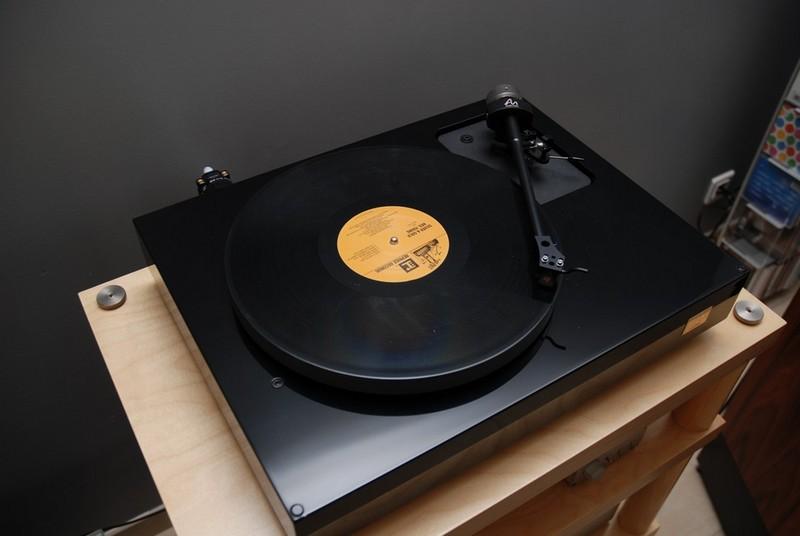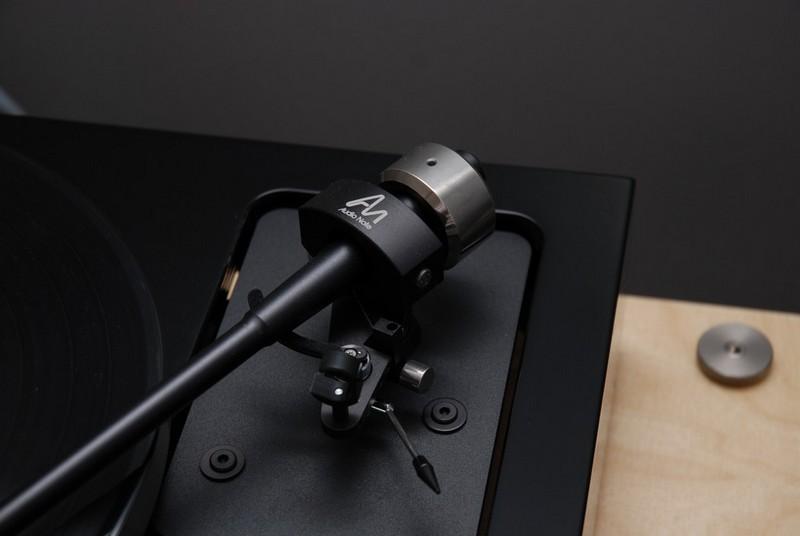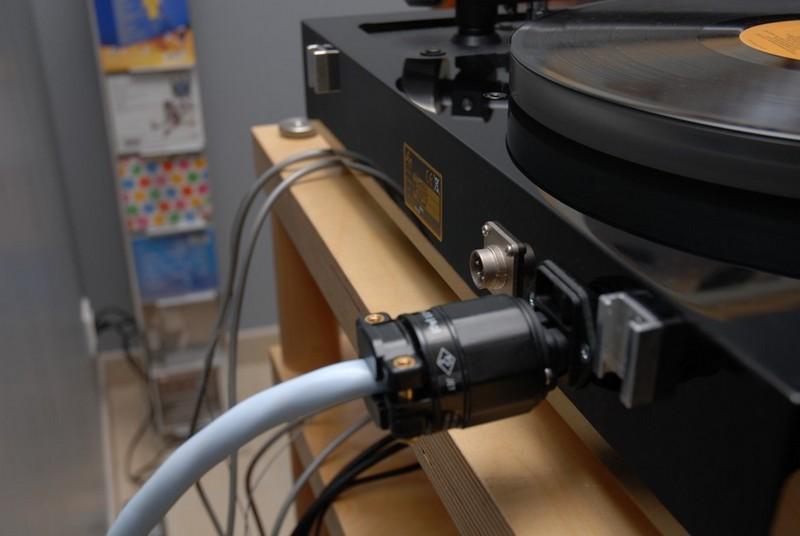Audio Note TT-2 Deluxe with AN Arm 2

[ Home | Staff & Contacts | HiFi Playground | Listening tests | DIY & Tweakings | Music & Books ]

Product name: Audo Note TT-2 Deluxe Turntable with AN Arm 2
Manufacturer: Audio
Note - England
Cost: TT-2 Deluxe black 2838.00 GBP, Arm 2 1028.50 GBP (Currency conversion)
(YMMV)
Reviewer: Graeme Budd - TNT France
Reviewed: May, 2018
Casting my memory back to 1992 I had an eighteenth birthday coming up and deciding to be different to my friends I decided I wanted a turntable rather than the usual Marantz CD50 SE (complete with lovely bad taste golden Special Edition sticker) that my mates were buying. After all I had been a cassette buyer up to that point, owned no CDs and my Dad's Eric Clapton and Byrds LPs were what I'd grown up with and were sitting around unplayed. So one Saturday I popped into my local hifi shop and by chance they had the possibility of giving me a demo within half an hour. Once everything was set up I had the chance to compare the Linn Axis with the Systemdek IIX. Now I'm not going to say the Systemdek won - to me the Linn was better in every respect and come my birthday my bedroom became the proud owner of a Linn Axis. I still own it today and it has been featured in this very magazine. In the meantime Systemdek vanished from stores but Audio Note bought the rights to the design and have been selling updated versions of it ever since
The updated range consists essentially of 2 main models - the TT-1 which has a single motor as per the original Systemdek and the TT-2 which has 2 motors for improved speed stability and better balance on the bearing whilst at the same time realigning the suspension during replay. This drastically reduces the problem of one motor fighting with the suspension as the drag between the record and stylus varies with amplitude and dynamics. The second motor also increases the torque available making the platter think it weighs more than it actually does. Both models share the traditional aluminium sprung subchassis but with updated acrylic platter. Various arm boards are available - the supplied one being specific to the Audio Note arms (of which more later). The main difference between the normal and Deluxe versions is that the Deluxe versions use Russian plywood plinths as against the chipboard used on the standard versions.There is also improved component quality with AN Copper caps in the power supply rather than the polyester ones used in the standard version. They also have the ability to run an improved outboard power supply hence the socket round the back.
The version I have here has the piano black finish which looks fab and will not look vintage in a modern decorated room. For the more traditional among you wood veneer finishes are available. One thing I ought to mention is that the deck comes with a lid - an often overlooked accessory which is essential if the deck is to co-habit with children or cats - mine (the cat not the kids) seemed to take a liking to the TT2 and was caught on several occasions on top of the deck. So full marks to Audio Note for practicality. My only gripe here is that the lid does not have the superb sprung hinges that Linn use and does occasionally creak somewhat - this would appear to be temperature dependent and isn't an issue from a performance point of view but the deck isn't given away and some may find this off putting. The fact that they are metal will give them the edge in longevity so the choice is certainly a valid one.
The Arm 2 is the middle model of 3 in the Audio Note range and is an original AN design from scratch. All three models share the same mechanical design with the internal and external wiring being improved as you go up the range. The Arm 2 consists of an aluminum armtube and base and includes an easily adjustable VTA wheel at the base. Bearings are captive unipivots keeping the ease of movement of traditional unipivots without the disadvantages associated with their lack of stability. Anti skate is controlled by a cleverly designed thread and weight system which keeps the thread and weight out of harms way at the front under the cueing mechanism rather that the usual back position which always looks fragile to me. Geometry is standard Rega and the arms can be fitted to all decks that have the traditional 23mm Rega hole rather than the new 3 point mount

As I already had a AN IQ3 cartridge at home the tests were run in this combination. This is AN's top MM cartridge which I reviewed a while back. For those who didn't read it a brief recap is due - the IQ range is Golding based but with ultra light weight copper coils and in the case of the 3 a titanium cantilever with AN type 2 diamond as used in the Io 1 MC (at a much higher price and with a bit of luck and a following wind on this deck for review later this year!)

Despite being a "bouncy" deck the TT2 is dead easy to set up - remove the transit bolts and the factory set suspension was pretty spot on. There are easy to access allen bolts should the suspension need tweaking but the deck is pretty close to plug and play. Obviously you need to align the cartridge but that's true of pretty much every deck (exception being made for plug in cartridges for Technics and other similar decks). In any case even if you're doing all the setup yourself you should be up and running within an hour. Actually make that an hour and ten minutes - I spent ages looking for the power switch. On the basic version it's on the front of the deck but on the Deluxe you have to earn the right to listen to it and this rite of passage involves locating the power switch. Is it under the deck like on Pro-Jects? No. Is it at the front corner like on Regas? No. Is the gold AN logo some touch sensitive power switch? No it isn't either. In actual fact it's around the back above the IEC which to be honest is a right faff. I appreciate that ultimately people who buy a TT2 are potential aspirants for the upgrade power supply but until you can afford one the power switch is a bit of a PITA. That said as the 33/45 switching is achieved by moving the belt between pulleys a quick reach round the back for the power switch every 20 minutes or so is relatively trivial so I'll let that one slide if the results are worthy.
I already have 2 MM compatible stages at home - the CEC PH53 and the GSP Audio Accession. Audio Note also took the opportunity to send me their "entry" level stage (I use this expression based on it's position in the range rather than the price!) for test giving my the opportunity to try ANs preferred combination.
The back end of the system was the Canary CA608LV and Living Voice IBXRW3s. Cabling from phono stage to amp was Audio Origami and Hitachi LC-OFC speaker cable connected the amp to the speakers. All mains cables were Supra Lo Rad with Supra or Furutech IECs. My Linn Axis and the Holbo linear tracker were also on hand for comparative testing.
So what does the TT-2 Deluxe/Arm2 sound like? Straight off the bat it's a fast and lively performer. There is no way it could ever be accused of being flabby and it impresses by its speed. Effectively it takes the traits that I noticed in the IQ3 when I ran it on my Linn and adds a whole level of detail and ambiance that my Linn just glosses over. As with the IQ3 on the Linn if you play a crap recording it will sound crappy. If the recording is bright it will sound bright. The continuation of the Audio Note definition of neutrality is patently obvious and doesn't involve adding a uniform sameness to everything
Speed stability is pretty good although I'd like to hear what the upgraded PSU brings to the party as I feel improvements are possible. It's certainly not a problem and the fast and lively nature I mentioned above is not due to the deck running too fast. I mentioned this to Peter from Audio Note and he suggested the speed stability was as good if not better than my Linn but the TT2 was just better resolving what was on the record hence showing up subtle speed variations. I'm not sure I'm 100% convinced by this argument but as I don't have the necessary speed test equipment to refute it so I'll leave it as plausible and we'll get on with the listening.
As I mentioned I had the opportunity to test the AN with three phono stages. Previously I'd really liked the GSP Audio Accession with the IQ3 - the Accession doesn't seem to add or remove anything and just lets cartridges get on with things - and this trait continued with the TT2/Arm2/IQ3 and I would still highly recommend this combination. Substituting the AN stage was a bit of a revelation as it just makes you stop thinking about what the system is doing and you just listen to the music. It's rather disarming if I'm honest but it's extremely endearing. It's going to get it's own review later this year so I'll leave more specific comparisons between the it and either the Accession or the PH53 for then.
I guess some specific musical examples would be good here. I played Drowning Witch from the Frank Zappa album "Ship arriving too late to save a drowning witch". This is complex music and can incite people to leave the room fairly quickly. The Audio Note made it much easier to follow and turned a complex bassline into one with an obvious groove to it and feet start tapping. The guitar is as strident as usual - there's no softening of the sound and the drum set has the lack of warmth you'd associate with a live recording. I also span Ned's Atomic Dustbin's "Godfodder". The opening track Kill your Television is presented with all the speed you'd expect along with some excellent vocal diction. The specificity of Ned's Atomic Dustbin (apart from coming from Stourbridge) is that they have 2 bass players. The Audio Note makes both bass lines obvious and makes them work together as they should - often the lower bass gets lost in the distorted guitars but not here and you can follow the both or just the one you want at any time. While we're talking distortion the second track Advert on Blur's "Modern life is rubbish" again shows the AN combination doesn't warm things up or take the shine off things for the sake of ease of listening or uniformity.
So far I've been full of praise for this deck so I ought to do some complaining somewhere so here is as good as any. Firstly this is actually quite a hard deck to review as any shortcomings it may have in detail or staging are not obvious and you just enjoy listening to it (as my comments above have alluded to). However I had the Holbo linear tracking deck in house at the same time and it made for some interesting comparisons(even if it does cost twice as much as the Audio Note) and allowed me to find a few chinks in the Audio Note's armour. The Audio Note concentrates on the fluidity of the music and the groove and flow of a piece be it the laid back nature of Neil Young's "Silver and Gold" or the frantic electronic beats of the Aphex Twin's "Syro". It's not as metronomically stop start as the Holbo and doesn't pass Geoff's "Ride across the River" test from his Killers list. It also doesn't have the background detail or the huge staging ability of the Holbo - Daughters "Winter" from the album "If you leave" is less ethereal with the instruments less obviously floating in space. From this point of view it's less obviously impressive when presented with certain types of material. But what it does it does suck you into the music and you forget all about the hifi stuff. I'm pretty sure that taking the cartridge to another level would no doubt bring the detail and staging and maybe comparing the AN to a deck at over twice it's price was a tad unfair..
There are two ways you could look at this deck. The first is somewhat cynical and involves saying that what we have here is a tarted up Systemdek and how could it ever be that good and be worth the asking price. To which I would point out the price hikes of certain hifi turntables over the last 40 years or so and would suggest a second approach. Listen to this combination with some of your records. They can be your favourites or they can be ones you've just bought. It doesn't matter as this deck will tell you a lot about the music that's on them and that's what's important. It's never less than enjoyable, easy to live with (power switch excepted if I'm being really picky) and if it's maker is to be believed capable of taking cartridges worth more than the deck and arm combined. As tested with the IQ3 it makes a strong case for the one make turntable. If you're looking at a new deck in this price range don't overlook it's "old school" styling and lack of machined aluminium bling.
Audio Note shows us that a classic design well executed with modern manufacturing techniques is more than capable of holding it's own.
© Copyright 2018 Graeme Budd - E-mail: Graeme@tnt-audio.com - www.tnt-audio.com
[ Home | Staff & Contacts | HiFi Playground | Listening tests | DIY & Tweakings | Music & Books ]